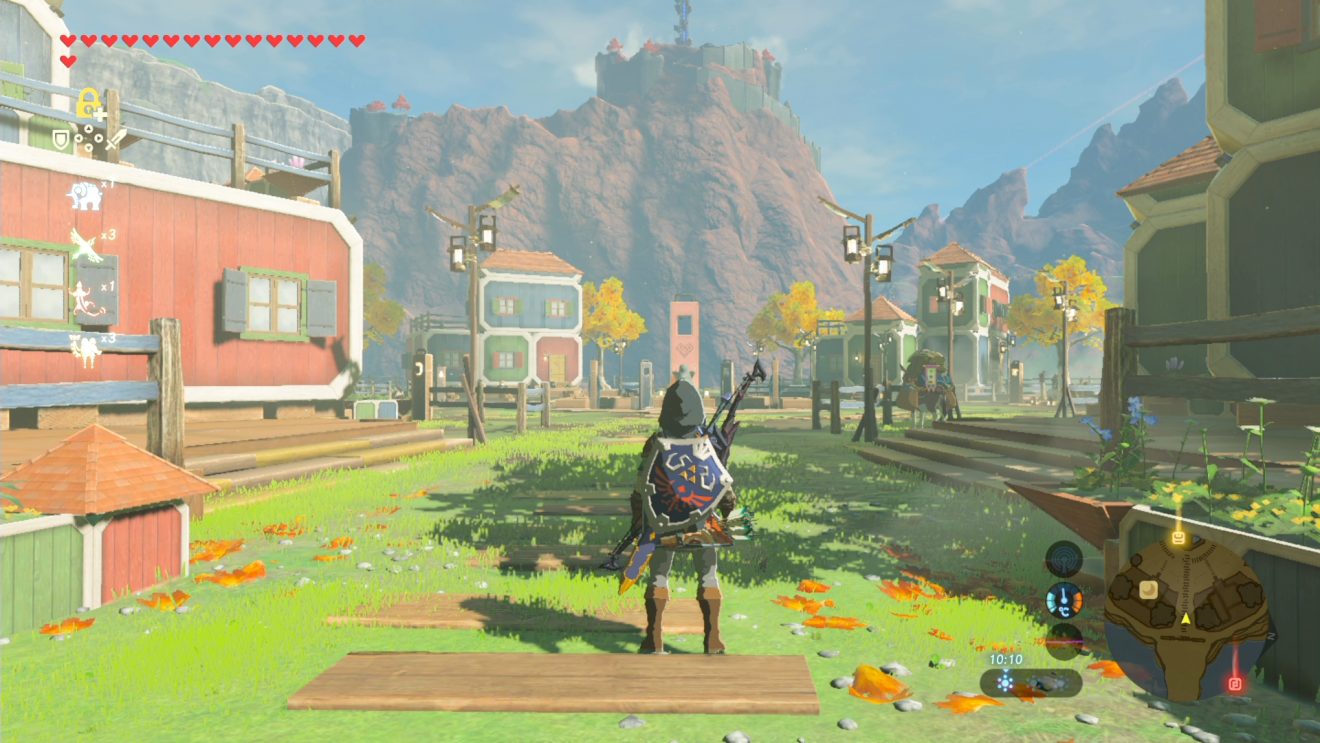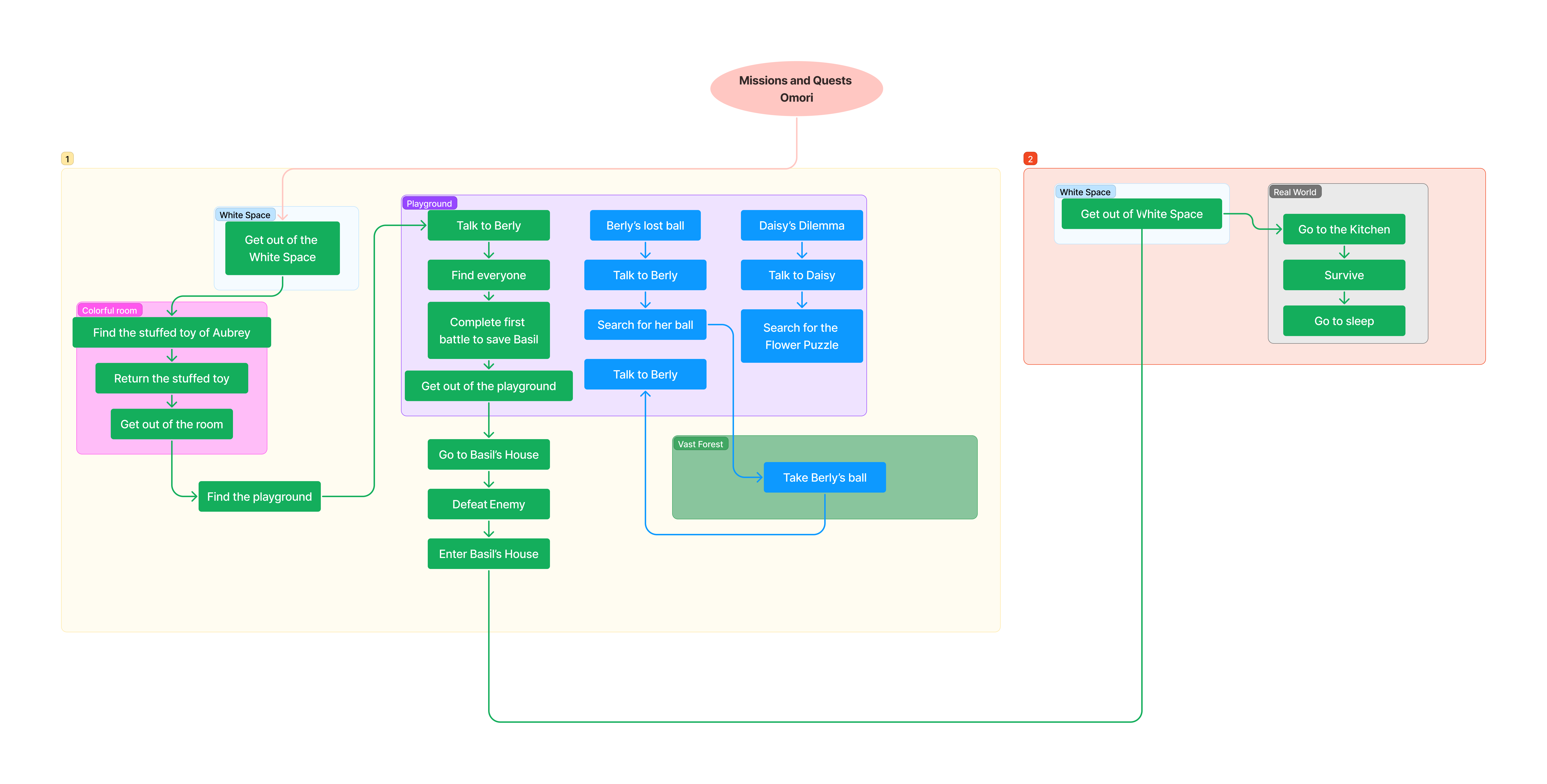Quests-and-Missions
Contents
- Definition
- Common types of quests
- Brief history of missions and quests in RPGs
- What to avoid while writing a quest
- Don’t make strangers ask for favors
- Be careful with repetitive missions
- Practice moderation
- Don’t make irrelevant missions important to complete the game
- Tips for designing quests and missions
- Using missions to immerse the player in the story
- Give challenges and prices to your players
- Offer variety to the game
- Elaborate on the same mechanics
- Conclusions
Definition
Missions and quests in videogames are specific objectives that the player must complete in order to achieve something in the game. These may or may not be necessary to reach the end of the game depending on which type they are and can vary widely in difficulty.
The main missions usually take all responsability in making the main story progress, letting the player know all that’s necessary for them to follow the story and acquire the skills to progress.
On the other hand, side quests are optional tasks that the players can complete alongside the main story, and that normally rewards them for completing them with experience points, game items or other bonuses. While they are not essential to completing the videogame, they can provide additional challenges and opportunities for players to immerse themselves in the world of the game.
There can be many types of missions and quests depending on the game’s genre, story and mechanics, but here I will explain some tips you can use yo make your own.
Common types of quests
- Kill Quests: The player is sent to kill something or someone for a reward.
- Delivery Quests: Require you to deliver an item from one location to another.
- Escort Quests: Consist in protecting a character as they move through a dangerous area to safety.
- Gather Quests: The player must collect a specific number of items from a location or take them by killing enemies.
- Hybrid Quests: Different types combined to form more complex quests.
Brief history of missions and quests in RPGs
The first quests can be seen in the early text-based games. These were pretty simple and straightforward and normally focused on defeating enemies and advancing through different levels recollecting items.
Colossal Cave Adventure(1976) is an example of this. In this game you have the mission of exploring a cave and searching for treasures, but it did not count with side quests.

Later with the rise of RPGs in the 1980s and 1990s, the quests became more complex and story driven. At this time came the birth of side quests with the release of Dragon Quest in 1986, however this had the problem that although these missions were technically optional, skipping them meant you’d miss out on crucial story details.

The game that first had optional quests that weren’t necessary for the main plot was Pool of Radiance(1988), which added more dialog and boss fights to the game.

In 1991 Neverwinter Nights was created, which is considered to be the first MMORPG and one of the first to include a lot of quests and errands from NPCs, that after completition gave you experience, gold and items. This was the idea that was taken later by Ultima Online(1997) and World of Warcraft(2004), creating repetitive missions that now are associated with grinding, forcing the players to play a mission multiple times in order to slowly being more strong and getting the items they want.
What to avoid while writing a quest
1. Don’t make strangers ask for favors
One thing that can make your players lose interest in a mission, is having to complete them just for the sake of continuing with the story or gaining something rather than being interested in the world. Making random NPCs in the game ask the player to do something for them without explanation or context of who is that person and give you a motive to help them, will end in the player not caring about helping or just skipping the mission if they can.
2. Be careful with repetitive missions
Every mission in your game doesn’t have to be a unique experience, but at least it is a good idea to make different categories of missions and add variety from them.
3. Practice moderation
Avoid loading your game with endless side quests, as they can start to feel overwhelming and become tedious and repetitive for the player.
4. Don’t make irrelevant missions important to complete the game
Don’t force the player to complete missions without relevance in order to complete the main plot. If you give them the oportunity to choose when to do this type of missions, it’s more probably for them to enjoy them.
Tips for designing quests and missions
Using missions to immerse the player in the story
If your game has a strong narrative focus, probably the players will want to explore the world for more lore and side stories for a better understanding of their surroundigns. Making side quests that let the player explore parts of the world that otherwise they wouldn’t have visited, and get to know more about the characters in the game that they may be interested in is a good way of designing them.
One good example of this can be the loyalty missions in Mass Effect 2, in which you as the player can choose to gain the loyalty of the squad members you want, getting to know their backstory and motivations. Completing these missions not only gives you more story, but also makes the members more effective in combat and may impact on the game’s ending.

Give challenges and prices to your players
Some missions can be made just to give challenges to the player and, although I wouldn’t recommend using this for main missions of the game that may be too much for some people, it can be a very good idea for a side quest with a satisfying reward for players that like challenges.
A mission that does this that I like is the Colosseum of Fools in Hollow Knight, which has a series of combats that you have to win to recollect prices. None of these combats are required in order to pass the game, but it gives you items and coins that can be very useful in the game.

Offer variety to the game
One thing that will probably cause the player to get bored of your game quickly is making the missions of your game feel repetitive and like a chore. To avoid this it is recommended adding variety and making different types of missions to the game.
An extreme example of this is the Yakuza video games, which have a lot of different activities and mini games in every corner of the map for the player to find and try, going from the normal action of the game to taking a break playing mahjong, finding a job or just singing in a karaoke.

Elaborate on the same mechanics
Depending on the game it won’t be necessary to reach this extreme of variety, especially having in mind that making a lot of new mechanics for every new mission is a lot of work. I would recommend that at least for the majority of missions you use the same mechanics that the player already knows, and find a way to make it a little different using narrative resources or different challenges.
This can be seen in the mission “From the Ground Up” in Breath of the Wild, in which all you have to do is recollect materials and delivering them like in many other games, but what I think makes this mission more special is that you can see the progress that you are making while watching a village being slowly build up thanks to your help, and seeing more and more people living in the village and selling their products.

Diagram Examples

Missions in Omori example

Conclusions
In order to make missions it is important not only to do it for the sake of filling the game, but to give a nice experience to the player, giving them stories, funny situations, difficult challenges and just making them feel curiosity of the world that you have created.
References
- Six Invaluable Tips For Designing Fun Side Quests - NYFA
- Side Quests - How To Make A Good Detour
- You Deserve Better Side Quests - Extra Credits Gaming
- Quest Design - I: Why Many MMOs Rely on Repetitive Grind Quests - Extra Credits
- Quest Design - II: How to Create Interesting MMO and RPG Quests - Extra Credits
- How to Write Side Quests for Video Games - 2023 - MasterClass
- Colossal Cave Adventure (1976) Insert Coin
- Sidequest meaning: How a video game chore became a cinematic storytelling technique
- How “grinding” came to dominate video game culture
